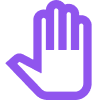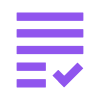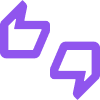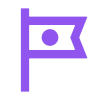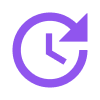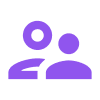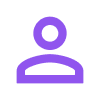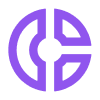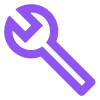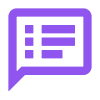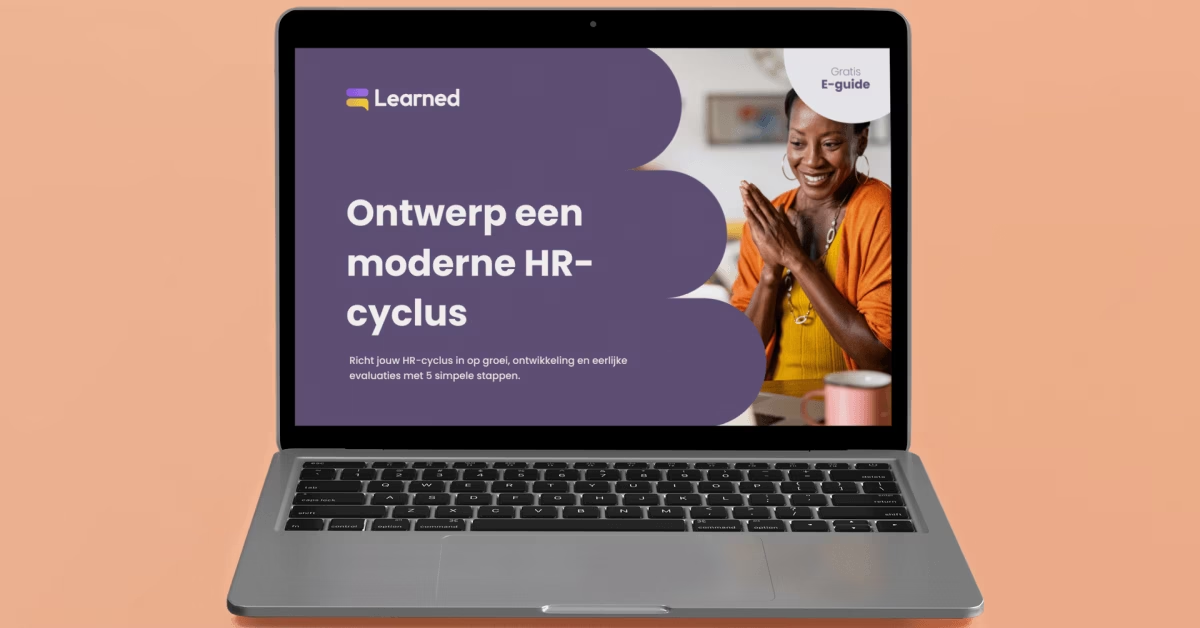More and more organizations are moving from a traditional to a modern HR cycle. The traditional appraisal cycle of planning, progress and assessment is now obsolete, as you may wonder if your appraisal cycle is still in line with modern business practices.
And maybe it’s time to modernize your HR cycle, too. Here’s how: find out exactly what the modern interview cycle consists of, why you want to revamp it, and how to set up your HR cycle in the modern way.
In this blog:
Prefer to get started right away? 👉 Download our free e-guide “Design your own modern HR cycle in 5 steps.
What is a modern HR cycle?
An HR cycle is the collection of all formal and informal conversation moments between employees and their supervisor about their professional goals, development and career. So it consists of all the conversations that for HR the
Performance Management
forms, and is also called the interview cycle or POP cycle.
The traditional HR cycle
Traditionally, an HR cycle consists of 3 parts: a goal setting conversation, the progress review, and the performance review. They are all formal conversations:
-
- Planning discussion (usually at the beginning of the year):
translating goals of the organization into goals for departments, teams and then for the employee; - Performance review (mid-year):
discuss progress and the extent to which goals have been met at that time; - Assessment interview (at the end of the year):
review an employee’s performance, and evaluate the extent to which goals were met. Remuneration is also often discussed, such as yes/no salary increase.
- Planning discussion (usually at the beginning of the year):
Some organisations add a fourth conversation:
-
- Development interview (usually once a year):
discussing the personal development and career goals of the employee, focusing on the future
- Development interview (usually once a year):
One might think of the main purpose of the traditional interview cycle as determining professional goals and accomplishments.
And therein lies the reason that the old HR cycle is in need of modernisation.
The modern HR cycle
The 3 traditional or formal conversations assume an organization’s perspective and are actually one-way: corporate goals are translated into goals for an employee, and then the manager assesses whether that person has made enough progress on those goals.
In short: there is little to no room for the personal development or feedback from employees themselves. Therefore, in recent years, many companies have revamped their HR cycle and added a number of conversations for employee input.
The modern interview cycle consists of at least these 6 components:
- Combines the formal conversations (the planning, performance and assessment conversation) + the development conversation into one conversation form, the “Great Conversation.
- This formal ‘Great Conversations.
‘ take place 4 times a year
- In addition, there is an
continuous dialogue
with regular 1:1 conversations between manager and employee (e.g., every 2 or 4 weeks)
- It is two-way traffic
: the employee gives input
- Future-oriented: all discussions aim to evaluate and
looking ahead
- Development-oriented: there are personal development goals for employees, although they always have a direct link to the company goals
Each organization can structure the conversations as they find most effective, and add additional moments of conversation as needed – such as an interim 1:1 conversation, development conversation or additional feedback moment.
An ongoing dialogue as a basis for modern conversations
Thus, the main difference between the modern interview cycle and the 3 traditional interviews is: is not performance-oriented, but is focused on development; and not on the basis of one-way traffic, but based on ‘servant leadership’ in which employees also take responsibility for their development.
This is because of the principles on which the modern interview cycle is based:
-
- An ongoing dialogue
- The new assessment
The conversations in the revamped HR cycle are no longer just 3 or 4 fixed “measuring moments” per year, but consist of a
continuous dialogue
: they are supplemented in the interim by informal 1:1 conversations. In it, employees discuss their progress on goals, successes and any roadblocks with their supervisor.
And in addition, the purpose of the 3-4 more formal conversations (such as a progress or development conversation) becomes to not only reflect on the growth, achievements and areas for improvement of a past period, but also to look ahead – on the basis of the principles of
The Great Conversation
:
– What contribution can someone make to team and organizational goals in the coming period?
– What competencies (soft and hard skills) does an employee want to develop further? And what concrete initiatives can the person take to do so?
A second starting point for conversations in the modern HR cycle is
the New Assessment
. This model for evaluation assumes the developing talents, from positive psychology. Again, ongoing dialogue is central, and responsibility for their own development and meeting goals lies with employees.
Why it’s necessary to revamp your interview cycle
The most important part of the traditional HR cycle, the appraisal interview, has been around since 1920 and was developed in the U.S. Army. The setup for this dates back to a time when one supervisor had to “manage” a group of employees doing roughly the same work.
But meanwhile, the nature of our work and the labor market have been changed irreversibly.
There is good reason why many organizations are considering doing away with the
performance review
: in the modern world, the traditional interview cycle no longer works.
This is reflected in the figures: several surveys show that employees and managers are no longer are no longer satisfied with the results of the traditional performance interview. Only 1 out of 5 employees in the US find their performance review transparent and conducive to better performance (
Gallup
2024). And in 2015 gave 95% of managers in the Netherlands say they are dissatisfied with an annual HR cycle (CEB).
The benefits of a modern interview cycle:
-
- You are more flexible as an organization: with ongoing conversation and many touch points, employee goals remain relevant because executives can quickly adjust them as organizational goals change. Moreover, you can focus more on digital skills, innovation and learning to work with new technologies.
-
- Employees become more involved in their goals and development, which is also good for their motivation: 73% of employees experience greater job satisfaction thanks to growth opportunities – according to research by
Gallup
.
- Employees become more involved in their goals and development, which is also good for their motivation: 73% of employees experience greater job satisfaction thanks to growth opportunities – according to research by
-
- With opportunities for development, you also retain more people. More opportunity for professional growth is the 3rd reason employees consider quitting their jobs (source:
Betterworks
2023). And according to research by Linkedin, thanks to a modern interview cycle, you reduce employee departures by 41%.
- With opportunities for development, you also retain more people. More opportunity for professional growth is the 3rd reason employees consider quitting their jobs (source:
-
- Certainly the younger generations are easier to retain with modern development conversations: learning and development is one of the top 3 priorities of millennials and Gen Z (source:
Deloitte
2024).
- Certainly the younger generations are easier to retain with modern development conversations: learning and development is one of the top 3 priorities of millennials and Gen Z (source:
Are you also convinced of the benefits of a modern HR cycle?
Then the next step is to set up an HR cycle exactly for your organization. But how do you go about that? We explain that below. 👇
5 tips for setting up a modern HR cycle
We share the most important tips we use ourselves at Learned to set up our conversations in a modern way. This structure helps us focus on the talents of our colleagues.
1. Determine the frequency of your conversations in the HR cycle.
Consider how often a conversation with your employees is needed.
Do your organizational goals change often and quickly? If so, it is smart to four times a year Hold The Great Conversation – with weekly or monthly 1-on-1 calls for follow-up. This allows you to make timely adjustments to the employee and adjust employee goals as needed:
At set times: ‘The Great Conversation ‘ – reflecting on goals, development and career opportunities
-
- up to 4 times a year
- combination of planning, performance and assessment interviews
- between employee and manager
- both prepare the conversation well
- guide = accompanying (online) interview form with questions and topics
Ongoing: 1-on-1 conversation – discussing questions, feedback and next steps
-
- continuously, e.g. monthly or weekly
- follow-up to The Great Conversation
- Between employee and manager/coach
- goal = focused on development: progress, achievements to date, obstacles, areas for improvement, tips and feedback
2. Give managers a clear structure for good conversations.
We recommend that managers engage in ongoing conversations with employees – and then discuss together the employee’s current position, career prospects and skills gap within the organization.
You can do so using a standard interview form, such as for a
planning interview
, a
1-on-1 conversation
or a form for a
performance appraisal interview
.
Tip! 💡 The Learned platform contains more than 10 conversation forms that we use ourselves for the conversations with our employees. We based these forms on the best practices of The New Assessment and they are available for free to any user who is registered as a “coach.
For the structure of your formal conversations, you can follow this order:
Conversation structure part 1: evaluating
Periodically reflect on the employee’s achievements and developments over the past period. Managers discuss (1) successes and areas of improvement to date; and (2) look ahead to competencies to develop further.
1. Involvement
Goal: To know how someone stands in the race.
We always start the conversation with the soft side, because we want to know if the employee enjoys going to work, what the reasons are for that and what we can improve.
2. Performance
Goal: express appreciation or resolve (potential) problems early, keep goals sharp and celebrate successes.
Now that we know how someone is feeling, we look back at the past period. We evaluate goals, outcome agreements or responsibilities that stem from the employee’s job profile.
3. Development, competencies and skills
Goal: discover talent (through analysis) and discuss commitment to development.
We evaluate personal learning goals and development agreements. These were recorded by the employee at the beginning of the quarter. By reflecting on this more often, we implement the points learned into our daily work.
We look at the employee’s (desired) behavior and knowledge level. To do this, we use the required competencies and skills from this employee’s job profile. For example, do we see an improvement in skills because of the learning objectives he/she is working on? We want to not only dwell on where someone is good, but also look at how to turn a “7” into a “9.
Conversation structure part 2: looking ahead
Following the principles of a modern HR cycle, you then discuss plans and expectations for the future.
4. Goals
Purpose: setting business goals
We look at what the employee wants to contribute to the growth of our company in the upcoming quarter. Consider, for example, (new) responsibilities needed for new projects or KPIs.
These questions can help:
- What contribution can the employee make to team and organizational goals in the coming period?
- What would the employee still like to develop?
- What can the employee do to move one step closer to his or her career goal?
5. Career Path
Goal: Find out where the employee wants to go in his/her career.
We ask about the employee’s ambition. Does the employee want to continue developing in the current role with additional responsibilities, for example, or is one interested (in the long run) in a different role within Learned?
6. Development agreements
Goal: Determine together what new development goals the employee will work on.
We look at what competencies and skills the employee can further develop so they can perform even better in their current role or grow into their future ambition.
7. Feedback from employees
Goal: To respond to feedback and areas for improvement about the organization and functioning of supervisor/manager.
Finally, we will discuss the feedback the employee has for the manager and what he/she would like to see improved within our company. Because development comes from both sides!
3. Don’t discuss terms of employment (yet)
Conversations within a revamped HR cycle deliberately do not address terms and conditions of employment. In fact, in our way of working, assessments and remuneration are separate. Of course, you use the ratings from The Great Conversation as input for determining the rewards, but we don’t put them in line with each other.
At Learned, this means that we use our HR cycle to focus on development and not use it directly to discuss terms and conditions of employment. For that, we schedule a separate meeting – namely at the beginning of a new year (in January), or a month before a contract renewal.
4. Use 360-degree feedback for greater insight
Before the development interview, have employees fill out a questionnaire. You can also choose to go through 360 degree feedback solicit input from colleagues or customers. That way, the manager gets a richer picture of performance and it’s a fair process for the employee.
We integrated these feedback forms into our Learned platform. For example, one form allows us to store employee responses, peer opinions and manager feedback.
5. Follow up the conversations in the HR cycle
At Learned, we want to create more feedback moments for our colleagues in the HR cycle so that we can build on the topics discussed in the “Great Conversations” – thus meeting our goals faster.
To do this, we use 1-on-1 conversations that we have with each other on a weekly (or monthly) basis. We then discuss:
- brief evaluation of past period
- progress on the goals (which we had established in The Great Conversation)
- possible blockages in daily activities
Getting started yourself: revamp your HR cycle in 5 steps
Are you convinced? Is it time to give your (traditional) HR cycle an update? Then get started with our e-guide
‘Design your own modern HR cycle in 5 effective steps’
.
We’ll give you pointers, tips and a variety of sample questions you can use to design or improve a new cycle.
